Thanks for watching!
Energy Pricing and Conflict: Inverse Co-Relation for OPEC

This attack is unsurprising given the falling prices of oil. What I expect to see is an increase in acts of terorrism in export-revenue dependant oil-producing nations. The past few months have seen increases in subsidization for tanker operators as there exist net-costs for operators to transport oil to refineries, even with all the additional tax exemptions and incentives we’ve been seeing put in place over the past 2 years.
Simply, the world has too much oil to meet current demand capacity, and cutting production won’t do anything to impact that in the short-term. You’ve got 2-3 month shipment delays and refinery backlogs for deliveries already awaiting processing, with 5 years’ worth of fully-paid projects in development that you’ll have to see finished before you’ll see a natural reduction in production capacity.
Why has oil rebounded from its low around ~40 during its late-2008 & early 2009 price collapse? Several economic factors, such as provision of liquidity and direct economic stimulus increasing the perception of future demand in traders and their data systems.
One of the major bottlenecks which had been maintaining that price rebound had been energy transport capacity and shipments to refineries. Since the liquidity issues of 2008-2010, China has been over-subsidizing production of energy transport capacity through several SOEs & SOE affiliates. Until China cuts back on production of transport production, you’ll see declining prices for energy. Hell, even then there may be too much excess capacity and too many emergency deals for pipeline development in exchange for sub-market purchase agreements. For instance, in Finland you already see Russia exporting energy at a 50% markdown from market oil rates.
http://www.themoscowtimes.com/business/ … 89584.html
This is unsustainable for Russia, and they know it. So why do they do it? Desperation. What alternatives does Putin have? He can unilaterally decrease production; that results in Russian default. He can allow the ruble to hyper-inflate to meet debt servicing obligations; this likely gets him deposed at best, killed at worst. Capital controls were already imposed when Putin began his Crimean adventurism; he required 51% to 80% minimum Russian ownership of corporations, forcing firesale to Russian investors and acquiring temporary boost in foreign reserves in lieu of long-term foreign currency funding stream, which has already run out.
Putin can do a deal with Erdogan to divide black sea energy control in order to shore up domestic support in elites due to long-term development potential; in fact, I called this as likely when Erdogan received a visit by Biden earlier this year, and today I see Putin is in Ankara:
http://mobile.todayszaman.com/op-ed_put … 65427.html
Putin could try firesale listing to the Chinese and long-term, under-price pipeline development deals, however, any increases in energy export capacity reduce energy prices due to present over-capacity issues. Simply, any deal which China takes will involve the Chinese requiring Putin to provide a hostage by listing assets in Hong Kong denominated in RMB, yet the Chinese have their own issues with foreign currency reserves and increasing rates of change.
It isn’t the absolute value of the foreign acceptable assets you hold which underpins perception of your ability to meet debt servicing obligations, its the rate at which your holdings of and liquidity with acceptable assets changes, and the rate at which Russia has been expending its foreign currency reserves has rapidly increased since 2014 Sochi Winter Olympics.
So why do I predict a rise in terrorism over short-term? Simply, there may be a snowballing of global capital flight and rapidly emerging liquidity crisis in key economic sectors for unstable nations far too reliant upon high operating margins in energy extraction, transportation, refinement, distribution, and consumption. With OPEC nations, none are in position to cut production and thereby cut rate at which foreign currency is obtained. Let’s break down why using OPEC members as examples. Since this discussion began with a terrorist attack in Nigeria, we’ll circle back there first.
Via Table 3.6, OPEC’s data:
http://www.opec.org/library/Annual%20St … tion3.html
Note, figures current up to 2013.
Nigeria, 1753.7 kilo-barrels daily
http://www.ventures-africa.com/2014/11/ … dium=email
Nigeria faces increased rates of government expenditure due to upcoming elections. This lowers the value of Nigeria’s currency and lowers rate at which Nigeria acquires foreign currency. Why are elections a currency-lowering issue for Nigeria? Well, Nigeria is a corrupt country run on personal patronage networks which are heavily linked to extended family ties without institutional development through which to filter natural tendancy for humans to favor family in hiring decisions. What that translates to in practice is that Nigeria must hire extended families directly via government employment in order to secure patronage blocks and influence elections.
Further, with decreasing margins for energy shippers, due to China’s over-subsidization of additional shipment capacity as a form of economic stimulus and usual system dynamics Chinese patronage networks, Nigeria has had to increase rates at which it subsidizes energy shippers, meaning that Nigeria has reduced operating margins for its energy exports and therefore reduced government revenues, necessitating a slow-down in patronage hiring due to reduced capacity for government expenditure. In order to increase capacity for expenditure, Nigeria would be required to raise revenue via matching increase in net effective taxation rates through a progressive taxation structure to offset reductions in domestic consumption, or by engaging in a central bank monetary policy of currency devaluation (as proxy for taxation upon lenders and subsidization for borrowers’ relative value of debt servicing obligations), both of which are extremely unpopular and will cause elites to move assets through less-accountable taxation structutes willing to enforce purchase exemptions.
Again, practical terms, this means that Nigeria’s central bank and other government institutions with high gross-revenue capacity will have individuals whose power base is reliant upon the continued expansion of patronage networks using increased rates of revenue siphoned off through their official positions. However, with reduced gross revenue coming into the ministry, one advances more swiftly through investments in alternative institutional structures or via borrowing heavily and repaying debt through an ever-ballooning cycle of total obligations owed until an individual is forced into default. In a game with the stakes of Nigeria, default means death and investments in alternative institutional structures means funding insurgency operations such as Boko Haram. Examples:
http://allafrica.com/stories/201409290346.html
http://politicsweb.co.za/politicsweb/vi … &pid=71619
http://www.nigerianbulletin.com/threads … vis.97142/
http://www.nigerianbulletin.com/threads/alamieyeseigha’s-son-assassinated-in-dubai.95864/
The alternative? Fund State Security Service & pro-government paramilitary groups to carry out extra-judicial elimination of non-network patronage bases in order to consolidated your position:
http://allafrica.com/stories/201410200956.html
My takeaway? Decreasing rates of patronage in authoritarian states with cultures that do not surpress family institutions are correlated with increasing rates of insurgency once insurgency begins operations and coordination with ambitious political elites.
Implications of Nigerian example for other OPEC member-states? When regional insurgencies are operationally active and have ties to your domestic elite, without excess capacity in ability to commit emergency capital infusions into patronage practices, political order begins to unravel. KSA, Kuwait, & UAE have been financing anti-islamist military government in Egypt, which has reduced state capacity to expand patronage networks to counter dissent and factional infighting during periods of declining gross revenue for key institutions essential for government revenue. Inability to implement inflationary or effective net taxation structures to generate government revenue and expand tax bases’ consumption habits forces ambitious to finance para-statal organizations as means to purchase influence and patronage networks with higher perceived rate of return than under existing state framework.
In conclusion,
1) Energy prices declining due to excess capacity at all levels of vertically-integrated energy industry
2) Declining prices require power sharing or increased energy production to offset
3) Unwillingness or inability to institute structural reforms and share power during times of plenty forces capital flight during times of declining growth rates
4) Capital flight offset by increasing energy production
5) Increasing energy production with excess transit capacity forces prices to return to operating margins for extraction operations
6) Decrease in prices increases instability in autocratic systems of power due to higher perceived return on power consolidation through non-state mechanisms
7) Attempts at power consolidation among elites, shoring up of popular support, or policies for both will most likely result in decreased revenues with increased expenses
8) Mismatch of expenditure rates and revenue rates forces increases in revenue until global energy market is operating at-cost or operating under-cost until foreign currency reserves expended or state collapse
9) Therefore, increased rates of violence as individuals fight for larger piece of shrinking wealth rather than implementing policies to expand wealth base
Suggestions for policies to rectify structural issues within current framework of nation-states, using tools presently available:
1) Global carbon tax.
2) Institutional collapse. Results? Civil war, elite/capital flight, foreign invasion: Pick two.
3) Acceptance of energy pricing single-digit % above operating costs as “new normal”
That’s about it, and why Russia is stuck invading Ukraine, ISIL & other jihadi groups attacking more frequently, and why inflation in America is on track to remain at ahistorically low rates: Global capital flight to safest nation of them all forces deflationary trends in USD. Simply, America is safe, rich, and on trend to continue getting richer at accelerating rates as global flight to America continues and our energy costs rapidly decline.
The rest of the world? I’d highly recommend becoming an American ally.
Russians in the Coral Sea
Uninvited guests: Varyag & Shapshonikov, both Russian ships are cruising towards Brisbane in concert with the G20 forum. Two Australian frigates, the HMAS Parramatta and Stuart, are enroute to “flank and monitor” Russian activity.
Russians:
The Varyag is Russia’s Pacific flagship: a Slava-class guided missile cruiser. Very mean looking with her 16x Anti Ship Missile tubes loaded with SS-N-12 Sandbox missiles. These missiles outrange anything in the Australian arsenal; land, sea or air.
And the Marshal Shapshonikov is a Udaloy-class guided missile destroyer.

Along with Varyag and Shaposhnikov are auxiliaries Fotiy Krylov (a tug) And Boris Butoma (Boris Chilikin-class tanker).
Aussies:
HMAS Parramatta (FFH 154) and HMAS Stuart (FFH 153) are both Anzac-class frigates.
How to defeat a multimillion dollar over the horizon radar system? Cruise around it. Russian warships circumnavigated around Papua New Guinea to take up their current poise in international waters off of Australia’s eastern coast.

The Historical Gamer
My friend TheHistoricalGamer has a video on Command! Give it a watch and if you like historical wargames please subscribe to his youtube channel.
He plays Iron Hand, a scenario focusing on a hypothetical Russian SEAD attack on Azerbaijan.
The Strategic Aspect of Supercruising Flight
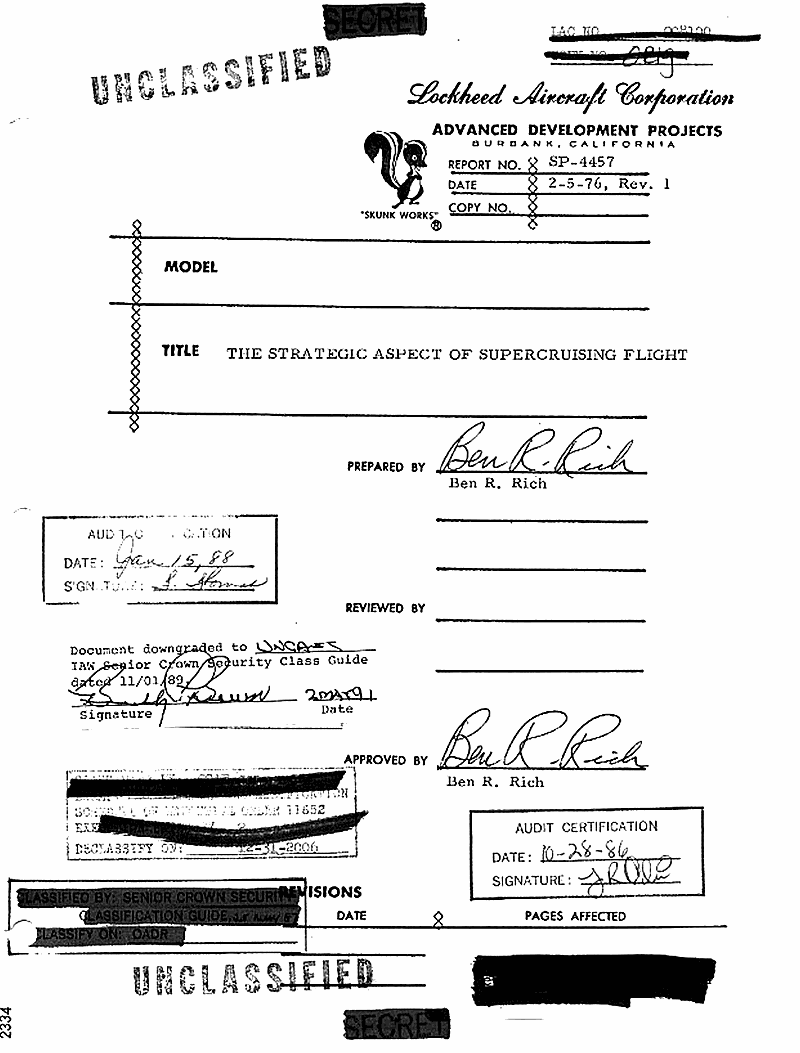
THE STRATEGIC ASPECT OF SUPERCRUISING FLIGHT
BY Ben R. Rich
For Delivery at the SUPERCRUISE MILITARY AIRCRAFT DESIGN CONFERENCE
17 through 20 February 1976
THE STRATEGIC ASPECT OF SUPERCRUISING FLIGHT
The vulnerability of aircraft to missiles and radar controlled guns was vividly demonstrated in the 1973 Mid East War where 443 aircraft were destroyed in eighteen days. Simulations show that the survivability of aircraft increase primarily with increases of speed, altitude, maneuverability and ECM. These have been confirmed by experience with the SR-71, the only United States supercruising military aircraft. There are other secondary factors that contribute to survivability such as the various aspects of stealth and size, reaction or response times, etc.
The physical and aerodynamic requirements for efficient supersonic flight vehicles ail result in increases of flight altitude with increase in flight speed and vice versa. Speed increase is necessary to meet the mass flow requirements of air breathing propulsion systems. Super-cruiser parametric studies show that as cruise speed increases above Mach 2.0, altitudes for efficient cruise exceed 50,000 feet.
Let us now review the threat to vehicles which cruise at high Mach number and high altitude. Figure 1 depicts Soviet missiles, gun, and aircraft capability vs. altitude. Shown on the right hand column are typical cruise altitudes for strategic aircraft as a function of speed. The data show that for altitudes below 60, 000 feet, aircraft aire vulnerable to a multiplicity of weapon systems. Focusing on the USAF’s only current supercruising aircraft — the YF-12/SR-71 series, which cruise above Mach 3. 0 and 80,000 feet — I will limit my comments to these aircraft. The aircraft has maneuver capability better than 2. 5 g’s. The double delta planform of the SR-71, as shown in Figure 2, is designed, with sharp leading and trailing edges; no right angle intersections, inclined vertical fins, etc. to achieve a low radar cross section. The aircraft, illustrated in Figure 3, is constructed, with over 20 percent of its surface area, of high temperature composite material to give a radar cross section under 10 square meters. The anti-radar design background was given in a paper delivered by Kelly Johnson to the Radar Camouflage Symposium at Wright-Patterson Air Force Base on October 3, 1975, entitled “Reduction of Radar Cross Section of Large High Altitude Aircraft. ” (5)
Air-to-Air Threat
Currently, there is no real operational air-to-air threat to the SR-71. Let us consider the Soviet’s most advanced aircraft, the MiG-25 FOXBAT. Figure 4 provides an overview of the main elements of the intercept problem. Figure 5 gives the operational steady state and zoom envelopes of the FOXBAT. If you assume the pilot sitting in the cockpit on alert, the FOXBAT climbout and missile performance are shown in Figure 6. The data show that it takes 8 minutes from brake release to reach its maximum steady state cruise altitude, assuming no maneuvering. Also shown are the FOXBAT radar and the AA-6 missile characteristics with its aerodynamic and seeker limits. The shaded area shows the limited attack zone against a cruising SR-71. To better appreciate the time and distances involved, Figure 7 shows the FOXBAT climb characteristics on a head-on, fly-over attack against penetrators approaching at speeds up to Mach 6. Just during the time required for the FOXBAT to reach its cruise altitude (8 minutes), the Mach 3.2 aircraft has penetrated 240 nm, while Mach 6 attacker has penetrated 480 nm. The data assumes no evasive maneuvering by either aircraft and instantaneous reaction by the FOXBAT. The effect of maneuvering is shown in Figure 8. This figure assumes that the SR-71 makes a 45 degree weave maneuver. Using FOXBAT performance characteristics, from airborne alert, and for various start locations, the figure shows that no clearly successful intercept can be made. It can be generally concluded that the air-to-air intercept problem is at the present time extremely marginal versus a high supersonic Mach number maneuvering target.
Surface-to-Air Threat
The Surface-to-air missile intercept problem also needs to be considered. Figure 9 shows the SA-2 missile footprint for three nonmaneuvering target speeds/altitude combinations. The way increasing speed/altitude reduces SA-2 capabilities is apparent from the diminished size of the vulnerable area. If you take a vertical cut of this same SA-2 envelope, Figure 10, the effect of speed and altitude are shown. No intercept is possible at speeds above Mach 3.2 and altitudes above 90, 000 feet.
Any type of maneuver considerably reduces the SA-2 capability as was shown in the Viet Nam war. In the several hundred flights over the Hanoi -Haiphong areas, no losses or damage were experienced. Discussions with regards to the SA-5 GAMMON missile exceed the classification of this paper. The above discussion is limited to nonnuclear missiles, no attempt will be made to discuss the nuclear threat.
Strategic Applications for Supercruise Aircraft
There are three strategic missions for a supercruising aircraft: reconnaissance, surveillance, and offense or strike.
The SR-71 is currently performing the reconnaissance and surveillance mission for the USAF Strategic Air Command. The aircraft has been operational in the South East Asia Theatre for over seven years. During the Viet Nam war, it made several hundred combat flights over North and South Viet Nam. During the 1967 Mid East war, operating from the Continental United States, the SR-71 completed several successful overflights of the Suez-Sinai battlefronts. In all these operations, the SR-71 suffered no loss or damage from any hostile action. Since its first flight in 1964, the aircraft has approximately 5, 500 hours over Mach 3.0.
Let me show you how we can exploit supercruising for the strike concept.
During 1965-1966, the YF-12 interceptor successfully demonstrated the firing of missiles from over Mach 3. 0/80, 000 feet. The YF-12 successfully launched 13 AIM-47 missiles (Hughes GAR-9). Twelve successful shots, direct hits or lethal near misses, were achieved on subsonic drone targets flying at sea level to 40, 000 feet over land and sea. The one failure was attributed to a guidance malfunction.
Figure 11 shows a strike version of the SR-71 — called the Bx — with four AGM-69A SRAM missiles. The range of the SRAM missile can be extended by a factor of 4 when launched at Mach 3. 0 and 80,000 feet, as shown in Figure 12. This significant improvement in range derives from the large potential and kinetic energy imparted to the missile by the high altitude and high speed of the aircraft at cruise. The current SRAM is a nuclear missile with no terminal guidance. The CEP’s are therefore not sufficiently accurate for high target kill probabilities; for example, at 100 nm range the CEP is approximately 1,500 feet and at 300 nm it is approximately 3,600 feet. However, with pre-launch navigational update and new improved gyros, these CEP’s can be halved. Accuracy can be further improved, of course, by terminal guidance, the discussion of which is the subject of other papers.
In summary, the super cruise concept when applied to the strategic strike mission can be complementary to the B-1 mission. It provides a highly survivable weapon system and could dilute the Soviet defense system.
Conclusions
Although the discussion has been on strategic missions, the lessons learned from the SR-71’s operation can be applied to a Tactical Supercruiser or an Advanced Tactical Fighter. Significant improvements have been made during the last few years in supersonic aerodynamics, propulsion, materials, avionics and stealth technologies. All these items tend to improve performance and survivability for advanced supersonic aircraft. There can be no doubt that the SR-71 survivability factors: supersonic speed, high altitude, high stealth, maneuverability and ECM will also provide a high probability of survival to aircraft performing tactical missions.

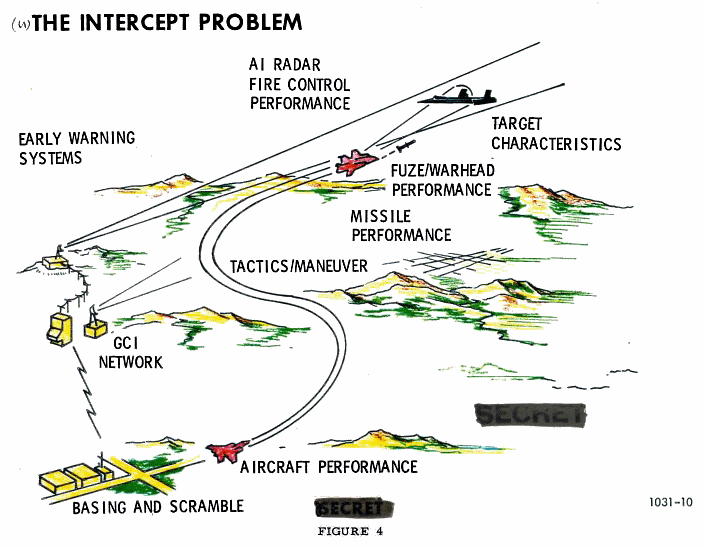


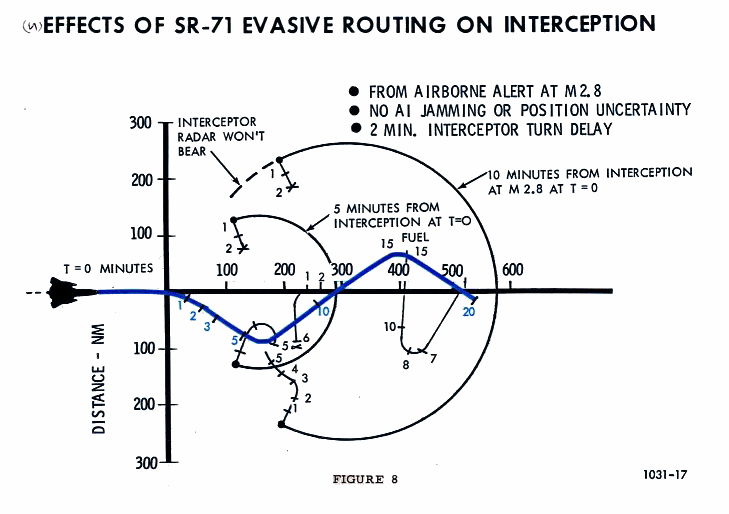
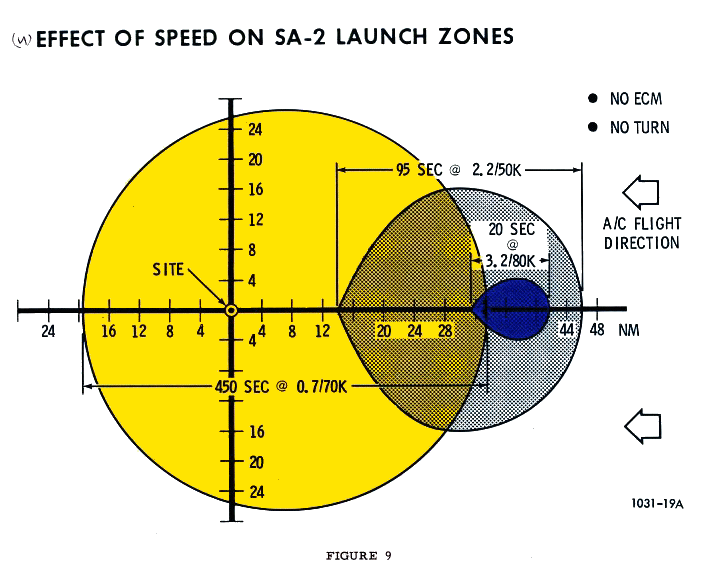

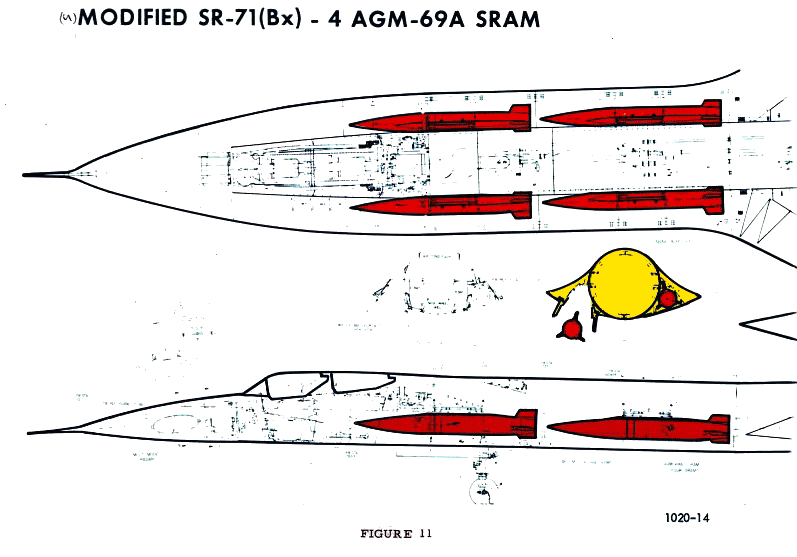

Wargame of the Year Stream
Thanks so much for watching!
Wargame of the Year Stream
The Baloogan Campaign stream will return this saturday with a special ‘Command: Wargame of the Year’ stream! On Friday Command is coming to Steam!
I’m planning to play Under African Skies, a community scenario made by Feltan. (Matrix thread) A scenario set in 2017 about a US task force attacking a China backed Nigeria.
The date of the event was Sunday, January 22, 2017. The time was 1:03 PM on the East Coast of the United States. The new American President had been sworn into office forty-eight hours ago, and this day he was in the White House with VIP guests, donors, campaign staff, family and friends. This privileged group, like tens of millions of Americans that day, is glued to the big screen television. Today is the highly anticipated American Football Conference Championship; the semi-final before the Super Bowl. The much hyped game was between the Denver Broncos and the Baltimore Ravens, and kick-off at Mile High Stadium in Denver just happened to the cheers of these elite party goers. The smart money said Denver would walk away with an easy victory – and since the new President hailed from Colorado, no one at the White House was wearing a Raven’s jersey. No one, that is, except the Senate Minority Leader who was from the opposing political party. It was all great fun. Spirits were high, the beer was flowing and the White House Chief of Staff couldn’t have been happier with the electric atmosphere and upbeat photo ops that could only benefit his new boss. Little did anyone know that before half-time arrived, the country would forever be changed.
Please join us on Saturday at 5:00 pm PDT for a live stream of Command: Wargame of the Year Edition.
In other news I’ve opened an affiliate sales account to sell Command; a special link to buy Command is available to the right. A Steam key as well as a DRM-free copy of Command. Using that link means that Baloogan Campaign gets 30%. :)
There have been a significant amount of improvements to Command since release. One might ask, “What does ‘Wargame of the Year Edition’ mean?” This page outlines all the new features since V1.00.
As always our chatroom is open to all; if you have a question about Command or even just want to chat about geopolitics, military technology & history please drop by!
And finally, I’ve set up a Tumblr Image/Video blog comprised of images and videos from the Baloogan Campaign Chatroom. Any image or youtube video posted to the chatroom is automatically uploaded there.




